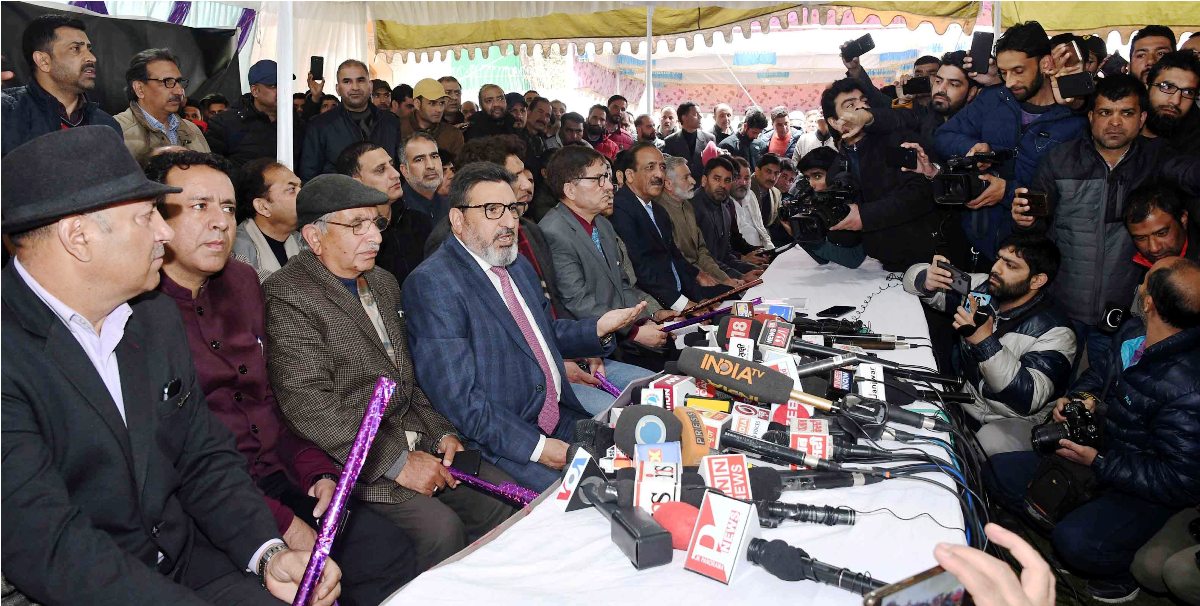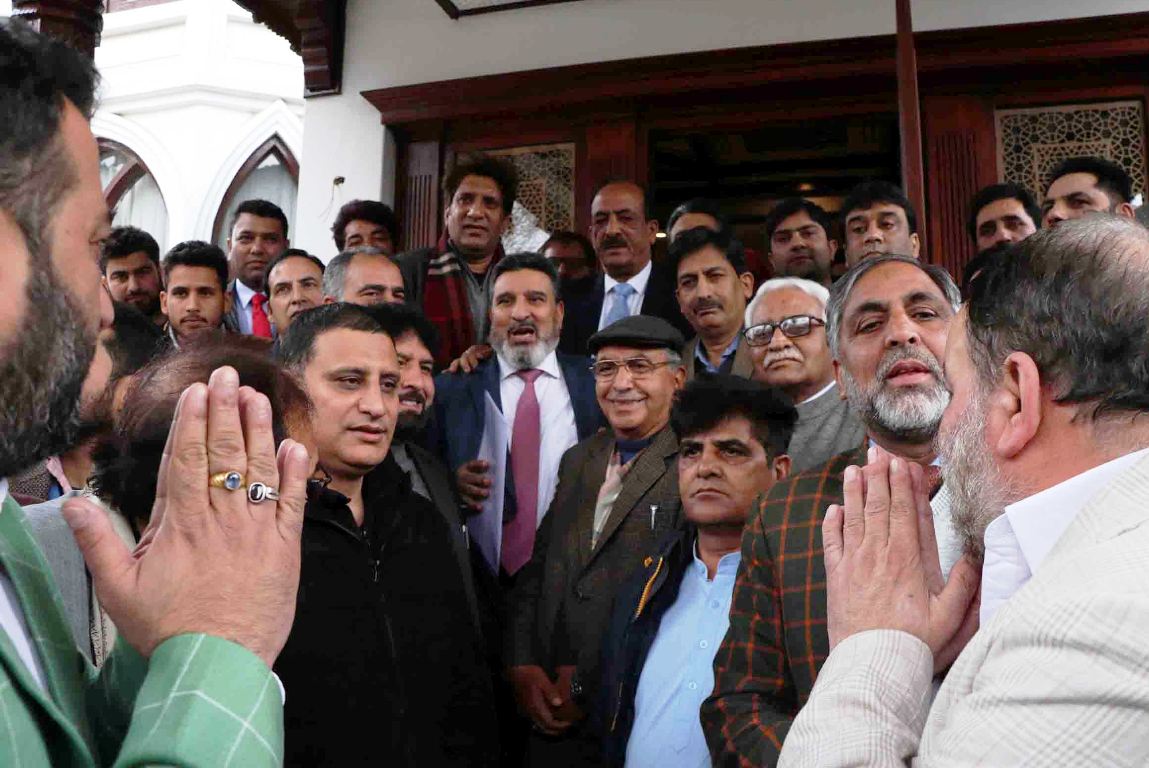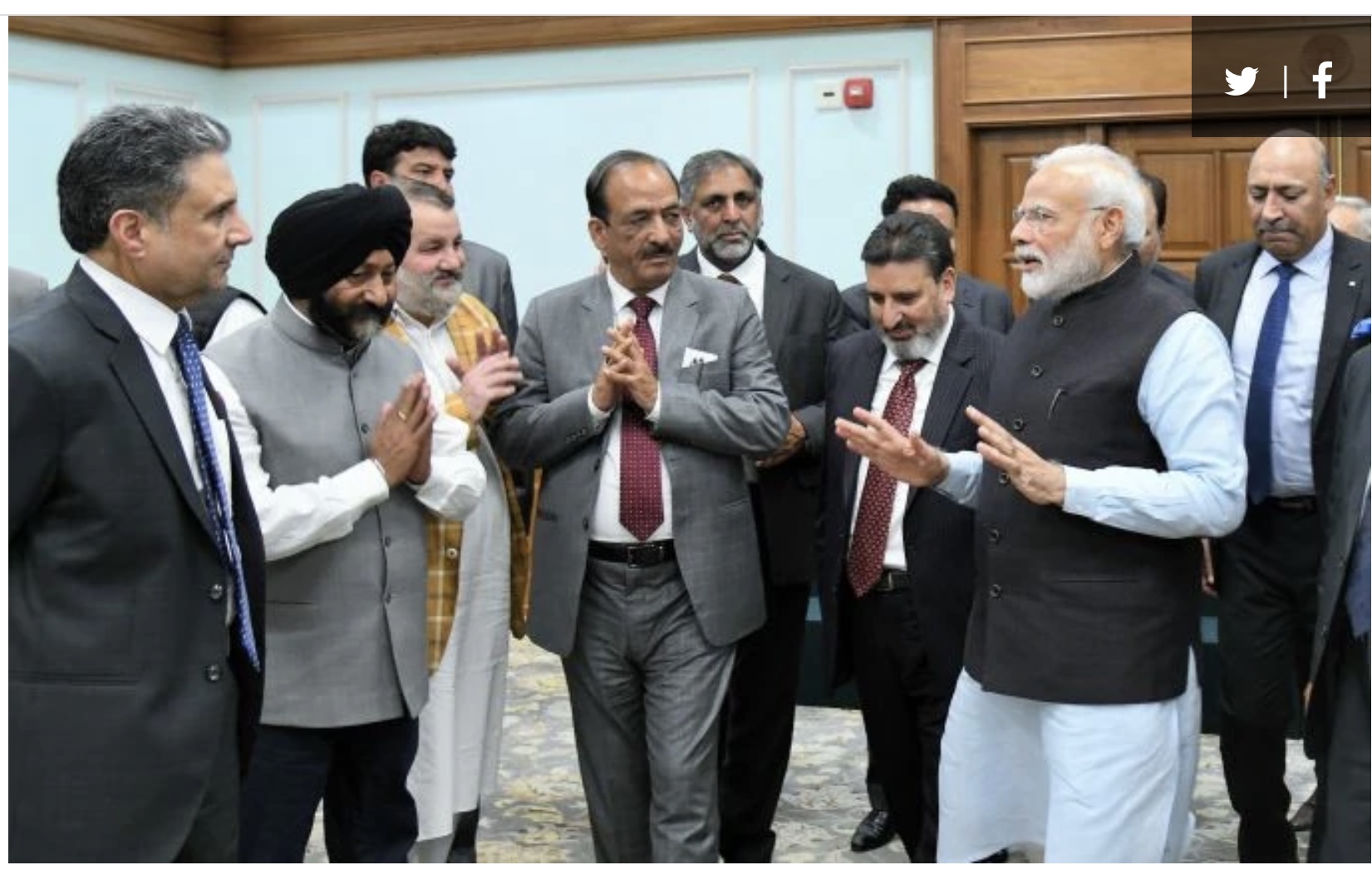SRINAGAR: The launch of the Jammu and Kashmir Pani Party was seen as a major development in Jammu and Kashmir in the post-August 5, 2019 period. It, however, could not manage a better space in the commentary of the major newspapers published from Delhi.

There were only two editorials written on the new party launch, one by The Indian Express and the other by The Hindustan Times. Even in Jammu and Kashmir, there was only one editorial comment in The Kashmir Observer.
Here are the three editorial comments on the Apni Party launch:
A new experiment in Kashmir
The Hindustan Times
March 9, 2020
Ever since the nullification of Article 370 and the reorganisation of Jammu and Kashmir (J&K) last August, political activity in the new Union Territory (UT) has stalled, with detention of leaders and restrictions (now substantially eased) in communication and connectivity. In this backdrop, the formation of a new political party in J&K merits attention. Former PDP leader, Syed Altaf Bukhari, has set up the J&K Apni Party, with the stated goal of bringing relief to the residents of the UT, and building confidence with Delhi. In a democracy, setting up a political party is a right, and the exercise of this right in the existing vacuum in J&K, is welcome.

But the future of Apni Party will depend substantially on whether it can actually represent the views, voices, grievances and aspirations of the people of J&K. There is speculation that Mr Bukhari has Delhi’s political support. This will pose, for him, a credibility crisis, for the politics of Kashmir have often revolved around taking a strong position against Delhi. This is not necessarily good — and Kashmir itself has lost a lot because of this binary. But if Apni Party is perceived as a voice of the Indian State, rather than being seen as a voice of Kashmiris, it will not succeed in winning popular support. The fact that Mr Bukhari has been allowed to set up a party — even as three former chief ministers remain in detention — adds to the perception that Delhi is playing favourites and is seeking to engineer a particular political outcome. The Centre must allow political ideas and formations to evolve organically, even as it creates an environment where all democratic leaders are free and can espouse their ideas in J&K— even those unpalatable to New Delhi.
Deja vu party
The Indian Express
March 10, 2020
J&K is no stranger to parties that have been created by the Centre for marginalising the regional political leadership.
The formation of the new Jammu & Kashmir Apni Party (JKAP) is no surprise. It has been in the works for months, even years, counting all the attempts by the BJP to form a government with a rump of the People’s Democratic Party in the last four years. The first attempt could be said to have been in 2016, when Mehbooba Mufti seemed in two minds on continuing the alliance with the BJP. JKAP leader Altaf Bukhari led that failed coup too. In 2018, after the BJP pulled out of the coalition government, it fished for possibilities of forming a new government from the existing legislators before the Assembly was dissolved. The difference is that this time, there seems to be no fig leaf of democratic dissent that JKAP members can claim for their coming together against the leadership of their parent parties. The birth of this new outfit takes place in a political void, at a time when the top leadership of the PDP and the National Conference are under detention, and are unable to respond politically to the dismemberment of their parties. That the JKAP will be closely aligned to the BJP seems to be a given.

Despite the claim of the coming into existence of a new or “naya Kashmir” after the nullification of Article 370, the JKAP is deja vu for the Valley. J&K is no stranger to parties that have been created by the Centre for marginalising the regional political leadership. Though the BJP loves to say that the Congress messed up Kashmir, it has followed in the footsteps of the Congress in terms of its own political tactics. In 1953, Nehru, who the BJP holds responsible for much that is wrong in the country today, jailed Kashmir’s tallest political figure, NC leader Sheikh Abdullah and installed a puppet regime led by Bakshi Ghulam Mohammed. History records it as the “original sin”, Delhi’s first big blunder in Kashmir. In 1984, the Congress government at the Centre broke the National Conference and replaced Farooq Abdullah’s government with one led by his brother-in-law, GM Shah.
The real test of the JKAP’s credibility will come only when the senior-most Kashmiri politicians are released from detention and can lead their parties once again. The new party will be watched. After all, the PDP, which came up in 1998, was born out of a need to cut the NC to size, and then evolved. Sooner than later, JKAP too will face the same question that has haunted all mainstream politicians in the Valley: Whose party is it, anyway?
Apni Party
The Kashmir Observer
March 10, 2020
Finally, after more than a month-long wait, Apni Party was launched on Sunday. And as expected, its leader Altaf Bukhari made politically correct noises, staying well short of demanding a reversal of the revocation of Article 370 which granted J&K autonomy under India’s constitution. Instead, he chose to focus on what he termed as “achievable demands”, which includes statehood for J&K and domicile rights for land and government jobs. While these demands do resonate with people of J&K, a large section of the population seems in no mood to let go of the semi-autonomous status enjoyed by the region under Article 370. So, it is likely that Bukhari’s party may initially find it difficult to relate to people.
With top leadership of the main regional parties like the National Conference and the PDP under detention, Apni Party is likely to have a free run which it can use to its advantage. Should it want, it can hold rallies and initiate public outreach programs. Ditto for separatist groups. Almost all their leadership and the activists have been jailed. They have thus struggled to even issue a call for a hartal, let alone hold protests, otherwise their regular activity.

The consequent political vacuum certainly needed filling. And it is here that Apni Party has come handy to New Delhi. Its leaders are drawn from the PDP, the NC and the Congress. Some of the leaders like Dilawar Mir, Ghulam Hassan Mir and for that matter, even Usmaan Majeed even command a committed section of support in their respective constituencies. But in their new avatar, it may be a challenge for them to find spontaneous support for their politics. Unless they earn it, the relevance of Apni Party, under the circumstances hinges on an absence of political opposition and which centre has so far ensured by denying space to the established parties across the mainstream-separatist divide.
But there is a limit to the centre’s role. For example, it cannot prevent the other parties from participating in the polls, which will be the real test for Apni Party. And should the other parties contest the future elections, as doesn’t look unlikely, Apni Party may not find itself up to the challenge. Although some of its leaders do enjoy a strong support base in their respective constituencies, a perceived pro-New Delhi tilt of Bukhari’s party may not translate into votes. Ultimately, it depends on what kind of leadership does Bukhari demonstrate and how far the party can bring itself closer to the public sentiment. It will be a pretty uphill climb, going forward.















